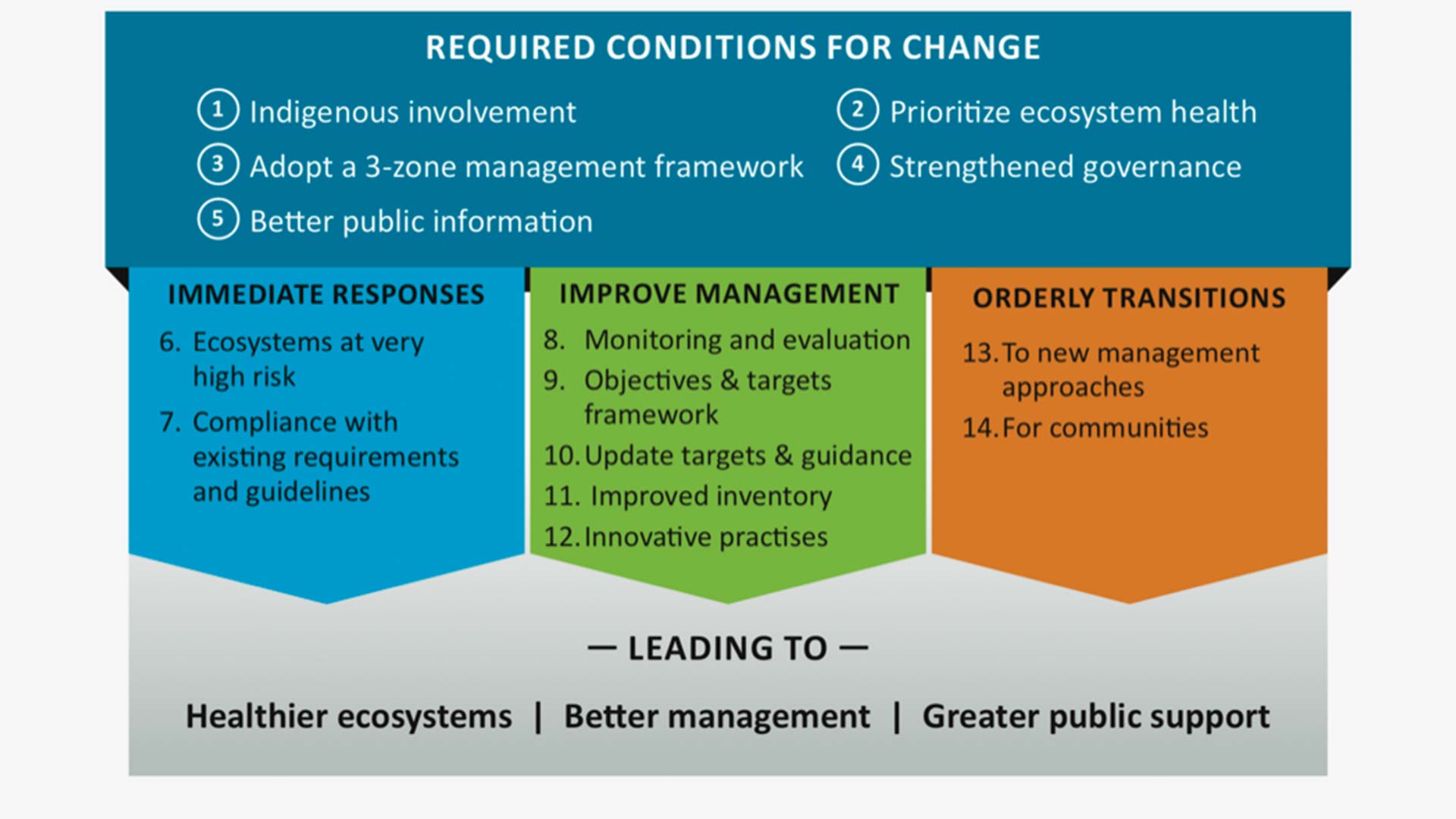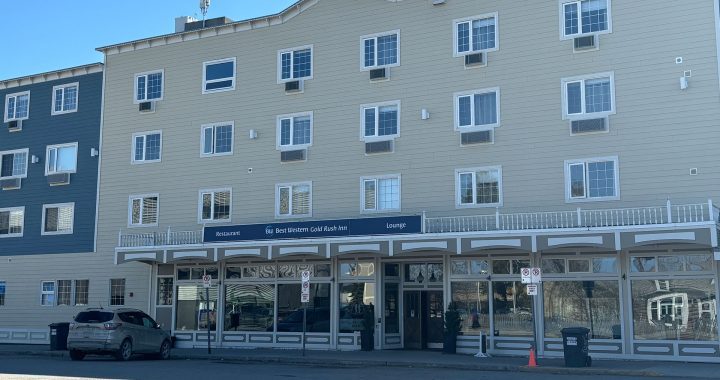A member of the Tahltan Nation in British Columbia says the province’s forestry practices need to be modernized – and the government has a report in its hands that will help it do just that.
Garry Merkel, an industry expert behind a report called the Old Growth Strategic Review, says the province needs to change its ways if forests are to be saved.
“Part of this report speaks on the necessity of bringing together and planning this transition together because this is a major, major shift, and you don’t want to have government trying to drive the whole thing because then they become the lightning rod trying to impose something too big on society, we need society, all the key players to collaborate plan how we move through this transition,” he said.
The report, handed to government in early 2020, has recommendations that Merkel says could avoid situations like what’s happening at Fairy Creek on Vancouver Island where police have been clashing with people trying to save the old growth forest there.
He says the Fairy Creek situation is the most well known action but they could happen all around the province because people feel like they are out of options to protect old-growth forests.
“Because we are down to the last few (old-growth forests) people are concerned,” he says. “These are the last areas they have these iconic areas to go to that many of them are slated for harvest and they don’t have an alternative left anymore.”
The RCMP say more than a thousand people have been arrested efforts to stop Surrey-based logging company Teal-Jones from operating continue.
The Fairy Creek protests and blockades started in May of 2020.
Read More:
Arrests continue at Fairy Creek in dispute over old growth forest
A month before the blockades started, Merkel’s review was submitted to the province.
The review with 14 recommendations is an independent review of how B.C. should manage old-growth trees.
The review, which was commissioned by the province in 2019, was released publicly in September 2020 and called for a paradigm shift for all stakeholders.
Merkel is one of the two professional foresters hired to create the new framework after speaking with 800 people in British Columbia.
He says one recommendation is to have more Indigenous involvement, moving from very little consultation to a government-to-government Indigenous relationship.
Merkel says another key recommendation is moving to a system adopted in other parts of the world where the ecosystem’s health is prioritized.
“If you take care of the health of the ecosystems, the aquatic and terrestrial-ecosystems on a landscape it will take care of the rest of those things for you, if you take care of the land, it takes care of everything else,” he shared.
APTN News asked the B.C. government about the review and its plans to modernize.
In an email, a spokesperson said, “In June, B.C. outlined its vision to modernize forest policy in B.C., to build a new foundation where ecosystem management, local involvement and innovation are top priorities,” the statement read.
They also committed recommendations on Indigenous involvement from the strategic review.
“In a break from the divisive practices of the past, we will engage the full involvement of Indigenous leaders and organizations, industry and environmental groups to find a better approach on the future of old growth forest in B.C.,” the Ministry of Forests added.
Merkel says while some recommendations have been implemented, there is still a way to go.
In some areas, there is an abundance of old-growth forests, but in most areas of the province, the forests are at risk of being lost and they need to defer or temporarily stop logging.
Merkel says B.C. set targets or limits on how much old-growth logging is permitted but there wasn’t proper monitoring in place.
“Without monitoring to keep track, they have blown past those targets,” he said.

He says a temporary stop in the most at risk places is needed.
“We are right now in a situation where we have taken so much of the old forests that we are down to remnants in certain areas; if we have any chance of managing for ecosystem health, we need to defer harvesting in those areas, until we can plan and build an ecosystem health plan.” he added.
Merkel says silviculture, the science of managing the harvesting timber from a forest, needs to be updated in a way that mimics how nature manages old-growth forests.
“You don’t want to be taking any more than a third of that out, spread lightly across the profiles some small ones and big ones, “ he says.
“Then you want to step out and leave it for a couple of hundred years before you go in there and do that again in that particular one.
He says an updated harvesting system would be “labour intensive” because it takes more work than clearcutting. He says he’s heard from trained foresters that some companies want to use more sustainable techniques.
But says the predominant way of harvesting trees in B.C. is still clearcutting – where machines are used to clear out an entire forest – usually away from public view.
Worse, he says, even practices thought to be banned are still taking place, such as progressive clear-cutting.
“Which means we thought we banned this, but I’ve seen pictures of valleys right now where we are still doing this, we start in one part of the valley and we move up until the whole valley is gone,” he says.
“That level of disturbance in a place that is never used to it, sets that ecosystem back thousands of years.
Merkel shared a story to highlight the impacts on the ecosystem with caribou populations.
They need a lichen on a tree called Old Man’s Beard to survive the winter months.
The province limits how high the mountain forestry companies were allowed to harvest to ensure that caribou could access this lichen.
He says the companies harvested to their limits.
“It turns out in heavy snow years they actually go a thousand feet lower than that to feed, so what is happening now we get a heavy snow year, they get pushed down and they starve to death,” he says.
“We spoke to one of the leading caribou experts and he tells us that the herds in the areas where that has happened which is most of Southern BC are already gone, they are basically living dead.”
The Ministry of Forests says they take old growth management and species at risk very seriously in an emailed statement.
“We continue to take steps to protect and promote the recovery of species at risk including by establishing wildlife habitat areas, ungulate winter ranges, riparian areas, old growth management areas, parks and other protected areas,” the statement read.
B.C. Ministry of Forests added that in June, they formed a technical panel to assist with carrying out recommendations from the strategic review.
“Since September 2020, we’ve designated 11 areas that contain almost 200,000 hectares of old-growth that is deferred from harvest,” said the Ministry of Forests.
Fairy Creek watershed and Carmanah Walbran were included with a two-year temporary stop on logging on old growth.
Merkel is one of five members on the technical panel.
He says temporary protections of certain old growth forests are needed to help develop a better plan.
“We just need to defer in those areas, to give us a chance to build a plan and figure if and how they fit into the harvest time over generational,” he said.
As the province works on implementing the old-growth strategic review, protests continue on Vancouver Island calling for province-wide protection of old-growth trees right now.









